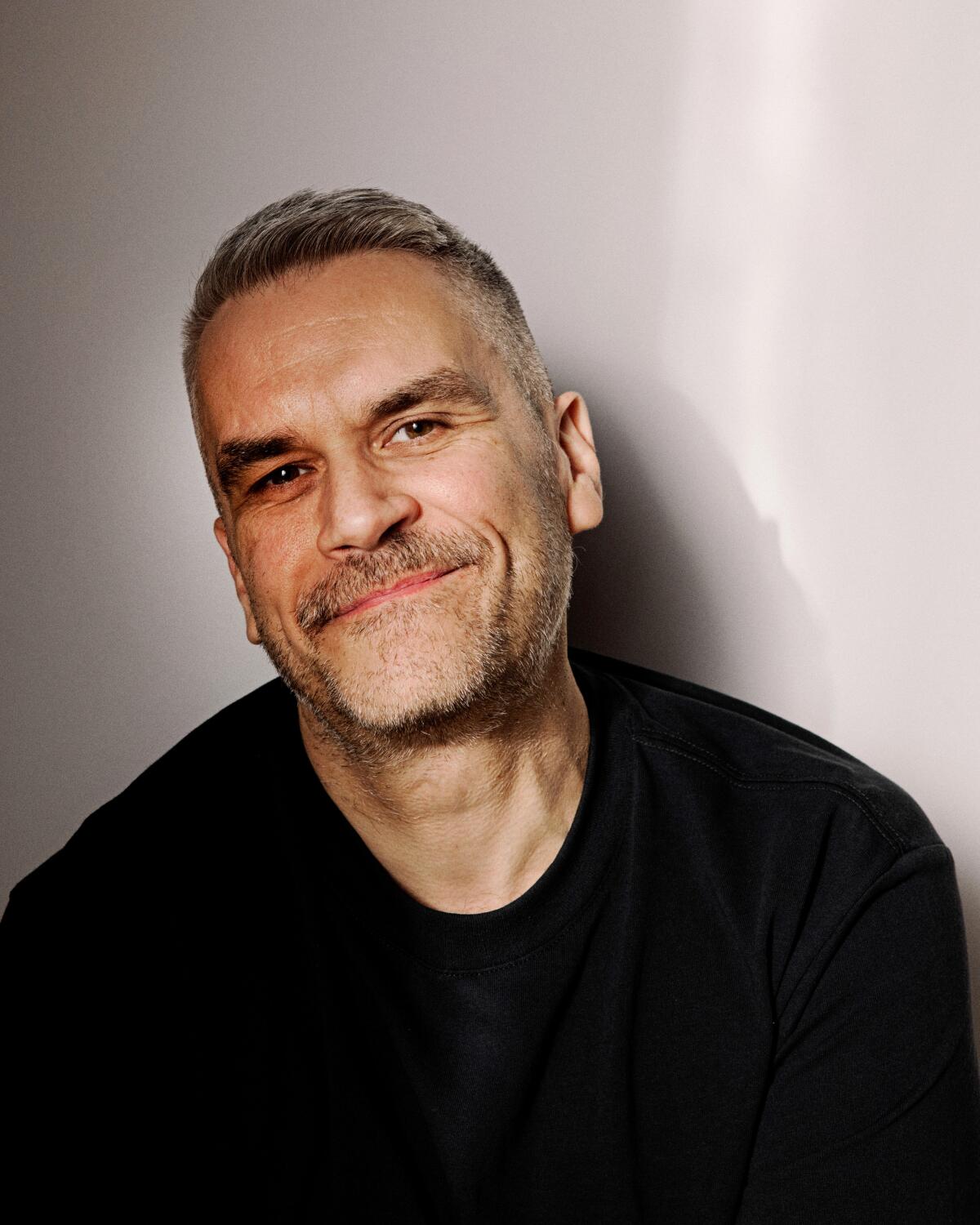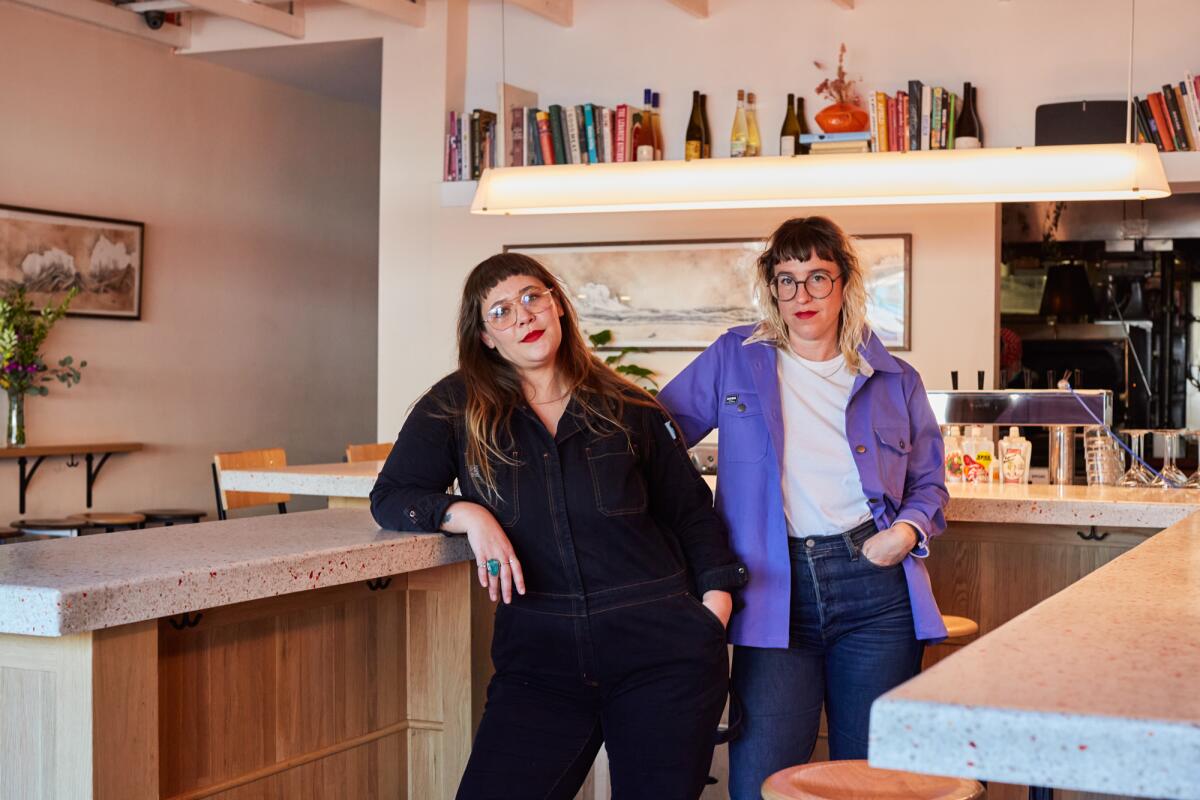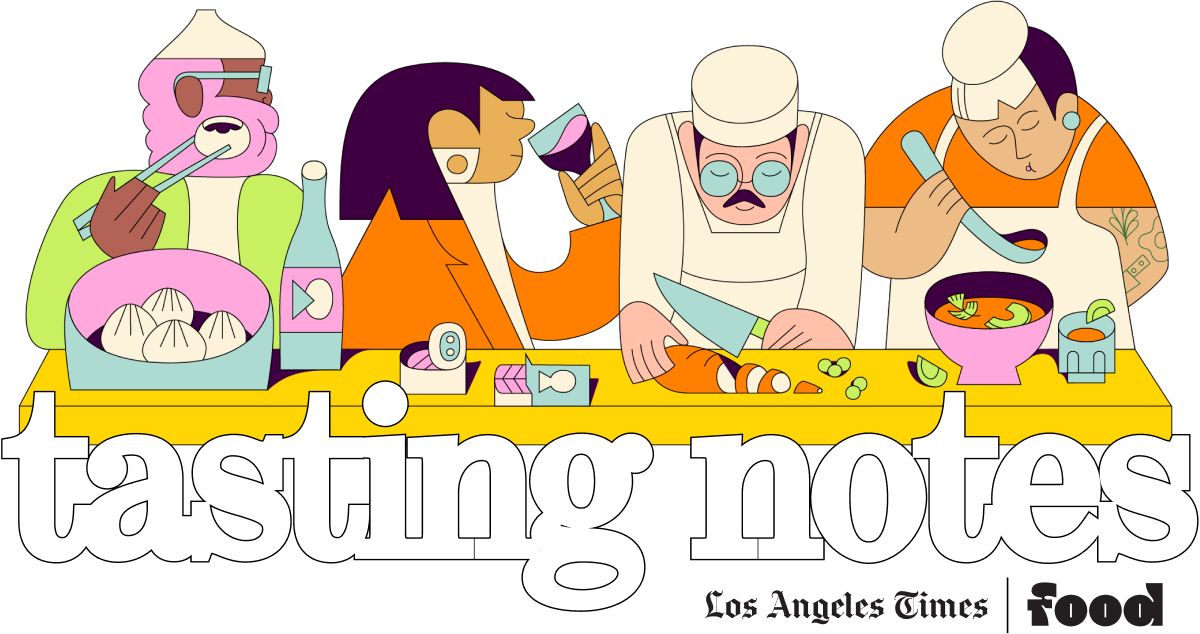Yup, it’s gay food. But what does that mean? Two new books tell all

- Share via
Only seven pages in, John Birdsall offers a conclusion to the question that titles his book, “What Is Queer Food?”
It’s a subject that has consumed him for decades, as a restaurant cook in the Bay Area and then as a journalist and author. In the last dozen or so years — when food media began more honestly grappling with identity and diversity in its subjects, and also with who is given opportunities to tell those stories — Birdsall won national awards for feats like his groundbreaking piece, “America, Your Food Is So Gay.”
The queering of American food
“Still, saying what queer food was on a granular level kept eluding me,” he writes in his new work, published this month. “Lots of us could say that queer food, like desire, exists, but nobody could definitely point through what is was.”
Drag-brunch eggs benedict? Rainbow cookies? Intentional diet choices? Suggestively shaped edible schtick?
“It shouldn’t have taken me as long as it did,” he accedes, “but at last I accepted the obvious truth that queer food is not a commodity. There is no essentialized cuisine of queerness, any more than there’s one simple answer for what it means to be queer.”
Acceptance is a doorway. He is freed to spend the rest of the book coupling meticulous research and gorgeous prose to illuminate lives that, in ways indirect and overt, shaped who we are as a culinary nation.
There’s Harry Baker, a man who flees from a sullied life in Ohio to Los Angeles and who, true to his name, develops a style of cake that becomes the de-facto dessert of young Hollywood; later it well be reworked and homogenized as a signature recipe for General Mills. There’s Esther Eng, an early 20th-century film auteur, her movies now mostly lost, whose fluency with the group dynamics of creating cinema translates to a second act as a New York restaurateur. In her masculine clothes and bluntly cropped hair, she is at once successful and invisible.

Birdsall notes that Craig Claiborne, then food editor of the New York Times and the father of modern American restaurant criticism, reviewed Eng’s self-named restaurant in the 1960s. Claiborne used his platform to push dining and cooking toward their current cultural status in the United States. Privately he was far more tragic — “haunted,” to use Birdsall’s word, by his difficult Southern childhood and misguided in a mess of a memoir published in 1983, 17 years before his death at 79.
Birdsall does not abide counterfeit joy. He narrates lives shaped by society’s denials, prejudices and punishments, and he lays their suffering bare. Some (among them Alice B. Toklas, James Baldwin and Richard Olney, one of my all-time favorite cookbook authors) know to leave the country to love in greater peace.
Where delight comes easy is in Birdsall’s prose. He took the narrative lessons he learned from his 2020 biography of James Beard, “The Man Who Ate Too Much,” to tighten the intricate threads of this opus. Characters that appear early in the book return for lightbulb impact. No strand dangles. Even when the reader feels his own rage — as when he veers into a personal story about making quiche for a Sunday open house in the storm-center of the AIDS crisis — his eloquence carries us through the bitterest aftertastes.
The past and present of gay restaurants
Birdsall centers his elucidation of queer culinary culture on people, and by extension the worlds around them. In “Dining Out: First Dates, Defiant Nights and Last Call Disco Fries at America’s Gay Restaurants,” also published this month, Erik Piepenburg shifts the focus to place.
His catalyst for his book: the accelerated disappearance of spaces by and for LGBTQ populations across America.
He opens with a requiem for a 24-hour diner in Chicago’s Lakeview neighborhood where he was a regular in the 1990s. “The Melrose was a gay restaurant because gay people made it one,” he begins. He watched older men share their meals and drag queens scarf bacon-and-cheese potato skins post performance, and took solace in blueberry silver dollar pancakes when chemistry fizzled with the guy across the table. The Melrose closed in 2017 after 56 years in business.
“When gay restaurants close, gay reliquaries empty of memory and meaning,” he writes. “Gone are favorite waitresses and go-to-meals, safe spaces and party places in the night’s last hours. For me and other gay people who love to eat out, losing a gay restaurant is a kind of dispossession.”

Piepenburg traveled across the country throughout 2023, interviewing owners and customers of establishments still present and long gone. Chapters graft careful reporting with his own running commentary, at turns cheeky and poignant and angered by the tenuous state of gay rights and acceptance.
Some salute institutions like Annie’s Paramount Steak House in Washington D.C.; lesbian-feminist restaurant Bloodroot in Bridgeport, Conn.; and trans safe havens like Napalese Lounge and Grille in Green Bay, Wis. Others seek to debunk myths, including the supposed queer riot in 1959 at a downtown Los Angeles location of Cooper Do-nuts whose occurrence Piepenburg could find little hard evidence to support. To consider the future of gay dining, he considers two recently opened restaurants in Southern California: the Ruby Fruit in Silver Lake and Alice B. in Palm Springs.

Piepenburg has been writing for the New York Times for nearly 20 years, concentrating mostly on film (especially horror), television and theater. He is, in the most wonderful sense, not a food writer. He self-identifies as a “diner gay.” This is a work about history and, above all, community, not exalted poetry on the art of gastronomy.
What strikes me most about Piepenburg’s frame of reference is how explicitly and organically he twins the subjects of dining and sex. We rarely acknowledge the existence of sex in Food Writing. First, it’s the hardest subject to not be cringe about, and food and sex analogies usually land as ick. But also, most of us who cover restaurants are keenly aware of ugly power dynamics that went unspoken in male-dominated kitchens for decades, and the industry as a whole is in a slow but sustained corrective era.
The approach in “Dining Out” succeeds in its matter-of-factness. Lonely people congregate over holiday buffets in bathhouses. Men frequented — still frequent — certain gayborhood restaurants to cruise, to pose, to be themselves.
A bit of melancholy also winds through the prose, as Piepenburg laments the “golden age” of gay restaurants that halted at the turn of the millennium, if not before, and also his own aging. Here is where I mention: I met the author 35 years ago, in my early college years before either of us was out, so I relate to his feelings on the passage of time. When in the book he references his ‘90s-era club kid days, sporting “shaggy wigs and carrying lunchboxes” at the Limelight in New York … I remember.
Of course, the release of Birdsall’s and Piepenburg’s books was planned for visibility during Pride month. Their merits, individual and collective, make for absorbing, enlightening reading far beyond 30 days of designated LBGTQ recognition.
Also ...
- Stephanie Breijo has the details on the two first-ever Los Angeles resurants bestowed three stars by the Michelin guide.
- Stephanie also reports on the L.A. restaurants and nonprofits that have mobilized to deliver groceries to sheltering immigrants, and shares details on the opening of Lucia, a Fairfax restaurant showcasing Afro-Caribbean fine dining.
- 13 L.A. spots to try nurungji, the beloved scorched rice at the bottom of the pot, from Tiffany Tse.
- Plus, a turkey sandwich perfect for the beach.
Eat your way across L.A.
Like what you're reading? Sign up to get it in your inbox every week.
You may occasionally receive promotional content from the Los Angeles Times.

Eat your way across L.A.
Get our weekly Tasting Notes newsletter for reviews, news and more.
You may occasionally receive promotional content from the Los Angeles Times.



